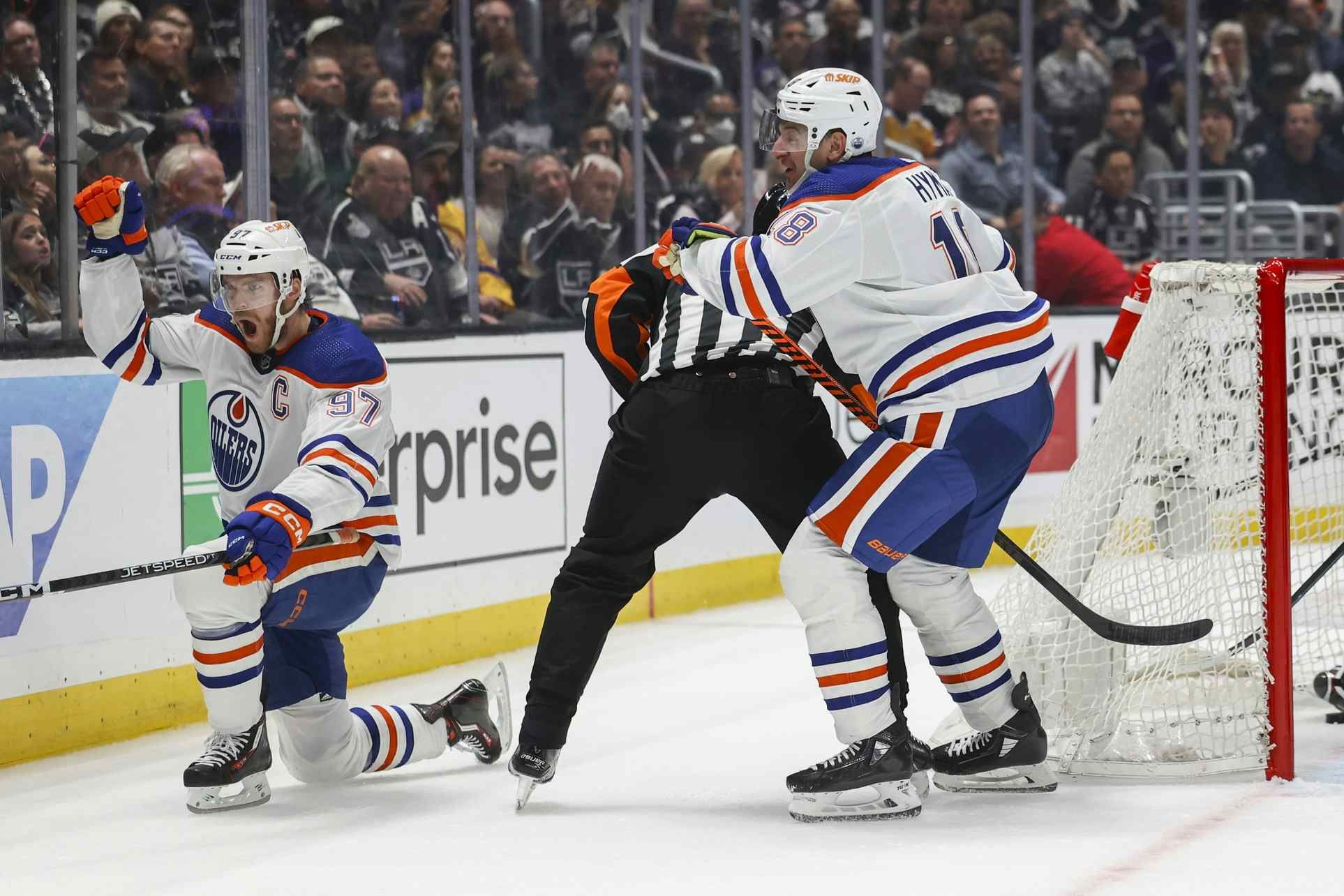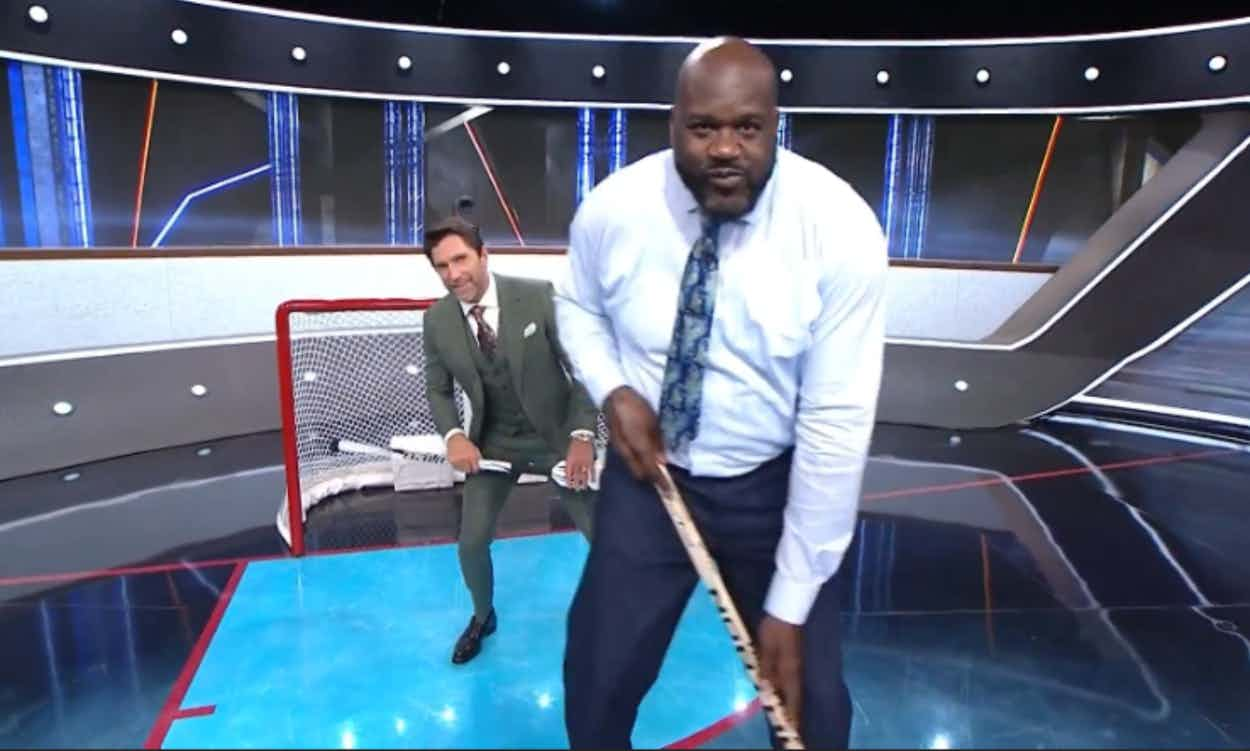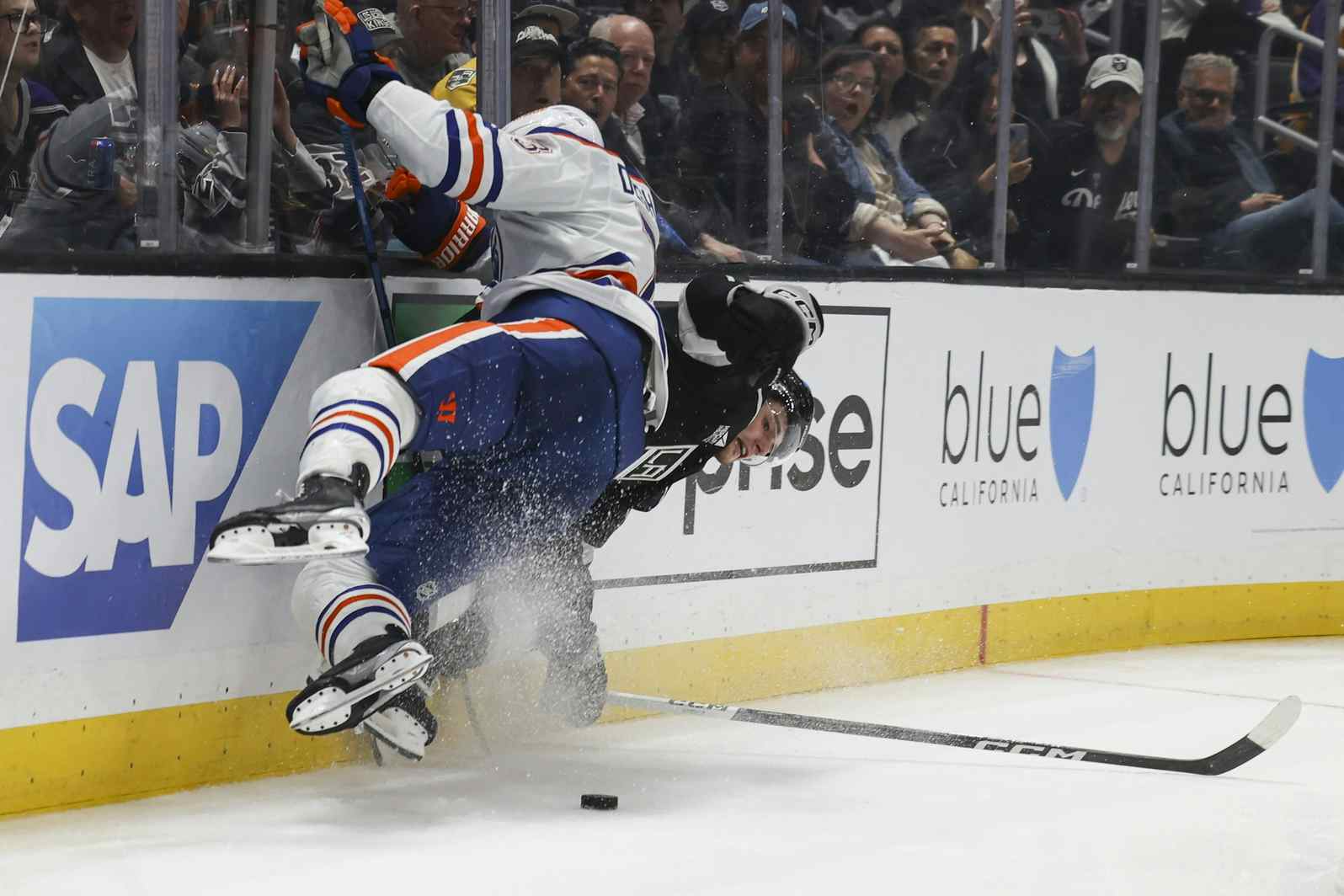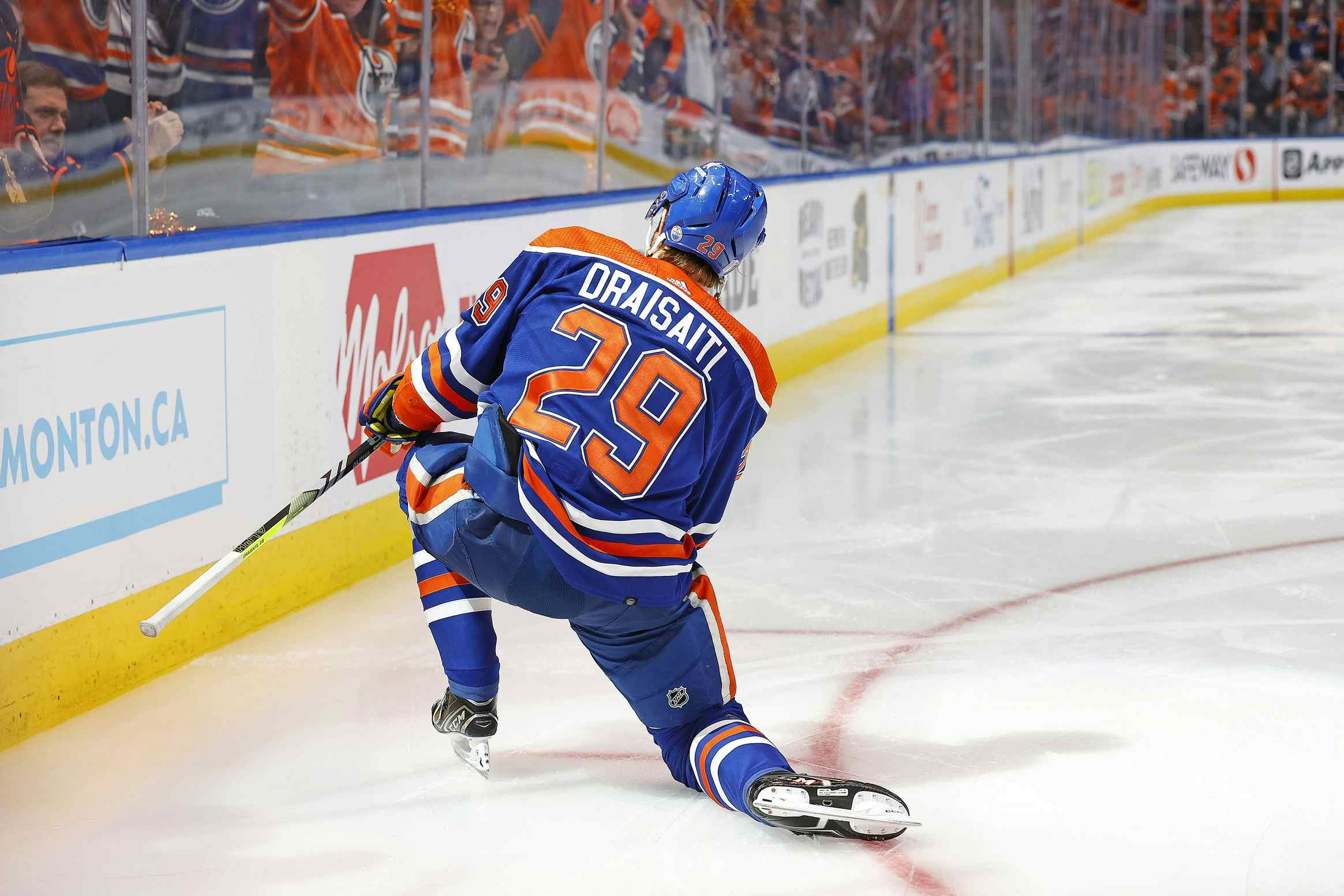Will Drake Caggiula be held back by a lack of even-strength scoring ability?
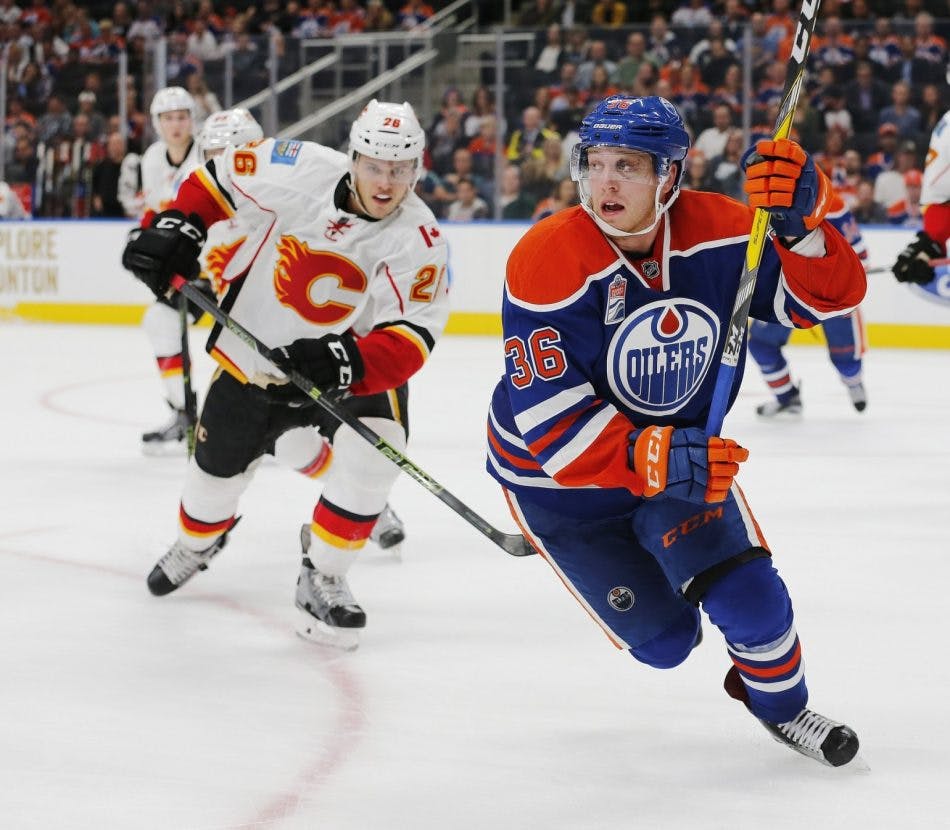
Just over a calendar year into Drake Caggiula’s tenure with the Edmonton Oilers, it’s clear that the decision to sign him as a college free agent was a good one in that he’s already a full-time NHL player. It’s far less clear what kind of NHL player he is.
Partially, that’s a result of circumstance. Head coach Todd McLellan stubbornly refused to run his three strong centres on three separate lines, and as a result Caggiula was often thrust into the role of third-line pivot. For an NHL rookie who primarily played wing in his last season in college, this represented a significant challenge. Compounding the difficulty was the fact that Caggiula only returned from a preseason injury in mid-November.
Thus it’s difficult to judge Caggiula’s failure in the third line centre role too harshly.
And make no mistake, Caggiula was a failure in the role. The acquisition of David Desharnais at the trade deadline was a tacit acknowledgement of such by Edmonton’s management group. The ironic thing about that trade is it kicked off Caggiula’s most productive segment of the season.
Over his first 30 games, Caggiula’s line was heavily sheltered, playing second-tier opponents and getting a major push in the offensive zone (26 more offensive than defensive faceoffs). In those soft minutes, the line barely broke even on the shot clock, was out-scored 10-7, and Caggiula himself recorded less than a point per hour at even-strength, a sub-fourth line scoring rate.
Over the next 20 games, Caggiula was shifted into a more defensive role, which included a long stint on Mark Letestu’s wing. During this period, he was on the ice for 34 more defensive than offensive draws. Edmonton managed to saw-off in the goals department (8-8) despite being crushed on the shot clock (a staggering -70 Corsi over this 20-game span). Once again, Caggiula generated virtually nothing offensively, coming in below one point every hour.
And then everything changed.
Over his last 10 games of the regular season, Caggiula scored four points at evens (2.43 points/hour) and added one each on both the power play and the penalty kill. His line wasn’t sheltered, and despite this had a narrow edge on the shot clock and outscored its opponents 6-2. It was a brilliant point in the season for Caggiula, as he delivered in all three disciplines. He even won more faceoffs than he lost, something which had been a weak point in his game all year.
The change wasn’t even McDavid-driven, though Edmonton’s franchise player certainly helped. Caggiula was on the ice for three goals for and none against over just 13 minutes with McDavid over that final segment, which boosted his numbers, but he still had positive shot and goal differential away from the captain.
Caggiula’s playoff work was less impressive, with him going pointless through nine games. He was placed on McDavid’s line late in the Anaheim series and promptly scored three goals in four games, something that will surely increase his chances of landing in that spot out of the gate next season. The difficulty is that over those four games the duo was out-Corsied 60-35, a miserable margin for any line, much less one featuring the league’s best player. I wouldn’t read too much into that, but then it’s probably a good idea not to read too much into those three goals in four games, either.
What makes Caggiula more fascinating than the typical rookie with such lousy scoring totals (overall, by points/hour he was the worst Oilers forward, behind Matt Hendricks and Benoit Pouliot) is his versatility. He’s fast, physical, and performed well on Edmonton’s second power play unit while also looking brilliant over 40-odd minutes on the penalty kill.
The interesting thing is that this does tie-in to his college career. Until his final season in North Dakota (on a super line with Nick Schmaltz and Brock Boeser), Caggiula was not a big even-strength scorer, but was effective on that team’s power play and spent a lot of time on the penalty kill. That history would suggest that year one in the NHL was not an aberration, that Caggiula may end up as a player who can help an NHL team in multiple ways, but who will always be held back by limited scoring ability at five-on-five.
It is, though, far too soon for certainty on that front, especially if Caggiula ends up as the cheap winger on a line with McDavid or even Leon Draisaitl.
(Much of the above analytics data was courtesy of puckalytics.com)
Previous year-end reviews:
- Centre: Leon Draisaitl, David Desharnais
- Left Wing: Milan Lucic, Patrick Maroon, Matt Hendricks
- Right Wing: Jordan Eberle, Tyler Pitlick, Iiro Pakarinen
- Left Defence: Andrej Sekera, Darnell Nurse, Griffin Reinhart
- Right Defence: Adam Larsson, Kris Russell, Mark Fayne
- Goal: Cam Talbot, Laurent Brossoit
Recent articles from Jonathan Willis

